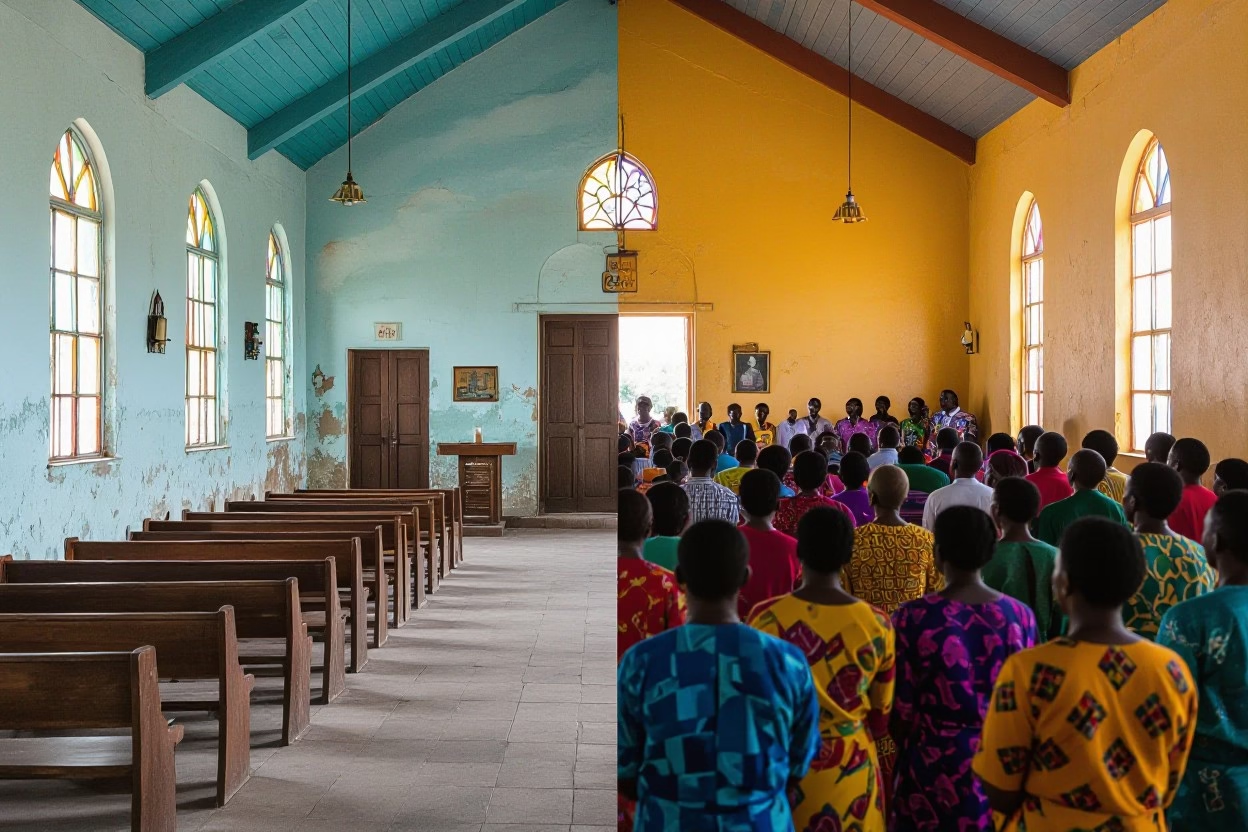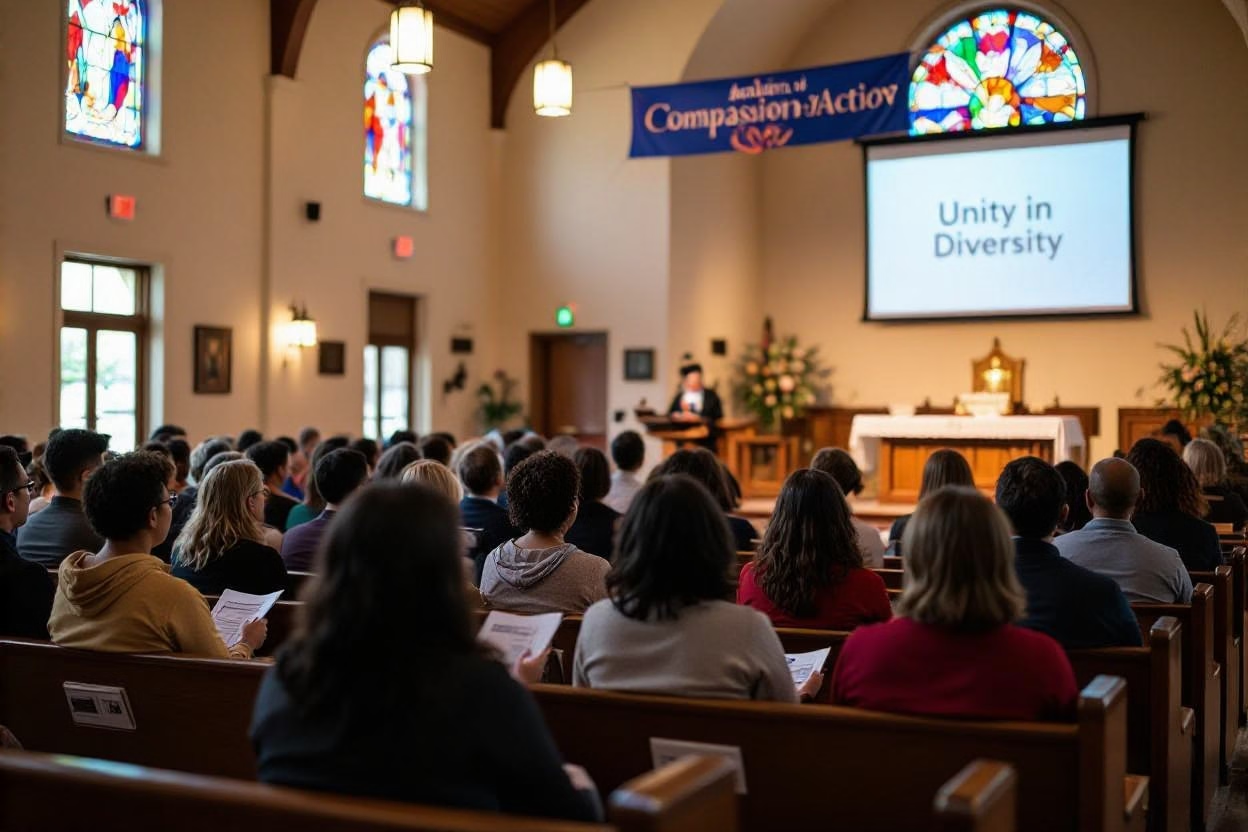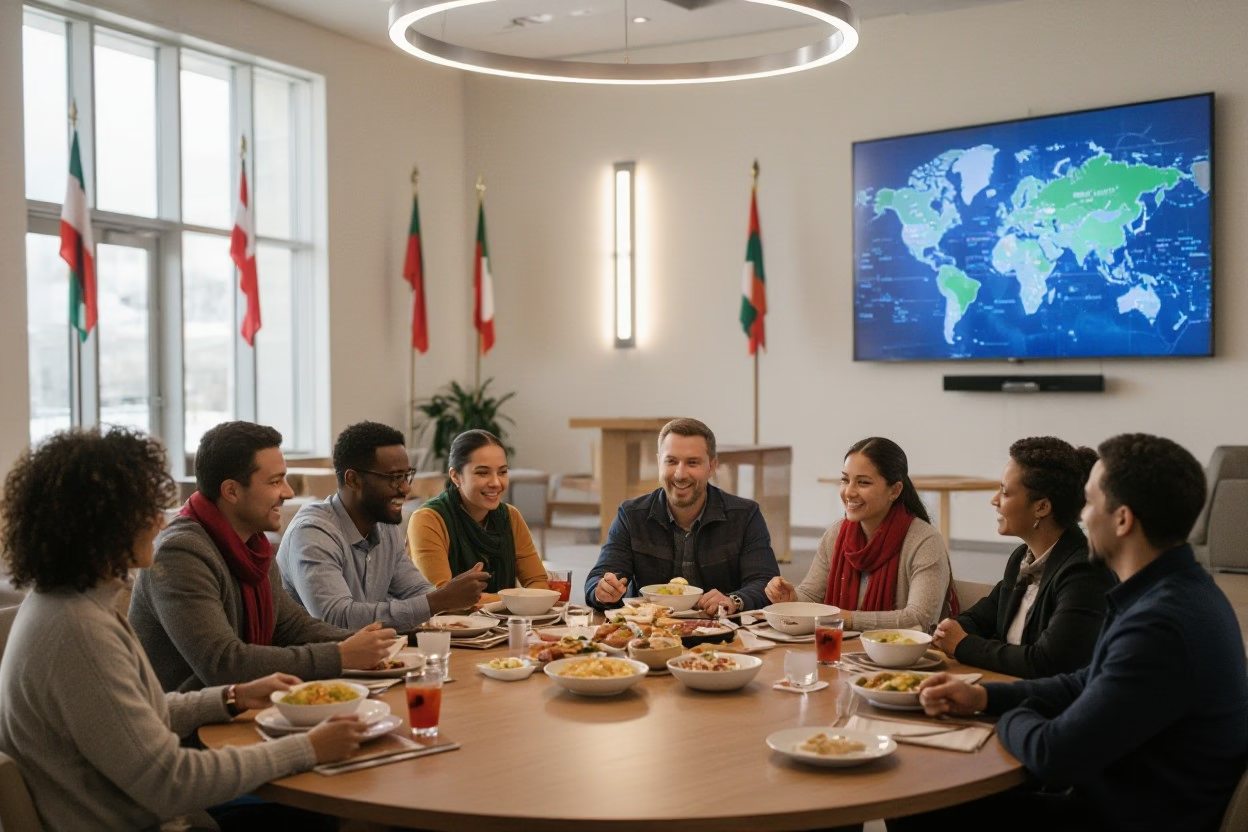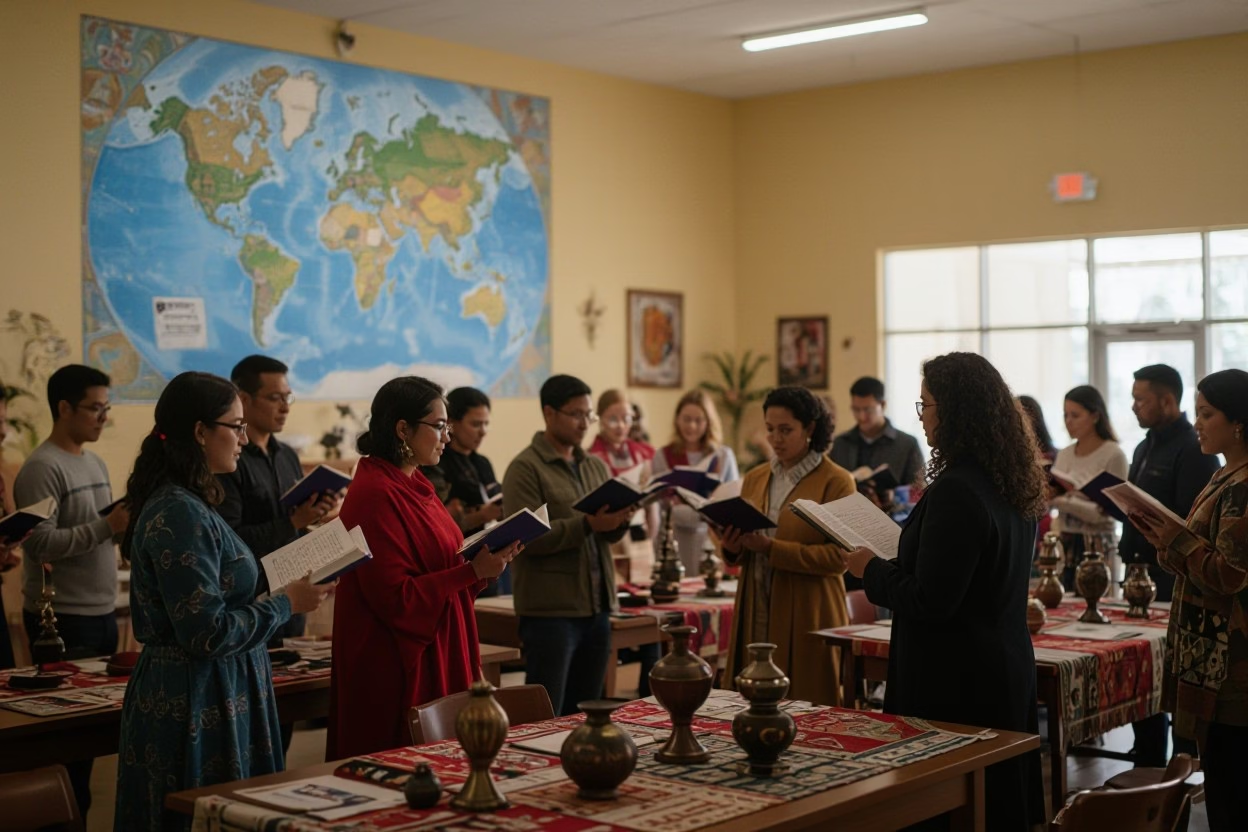Many people notice that Christianity is changing dramatically around the world, and you might wonder why church attendance is falling sharply in Europe and North America while thriving in Africa, Asia, and Latin America. This decline in the West stems from growing secularization, generational shifts, and a deep loss of trust in religious institutions. Meanwhile, the Global South experiences a vibrant boom fueled by youthful populations, dynamic local leadership, and churches serving vital social roles. Understanding these contrasting trends helps you grasp the evolving global face of Christianity today.
Key Takeaways:
- Christianity in the Western world is declining largely due to secularization, generational shifts, and reduced institutional trust caused by scandals and perceived irrelevance.
- Younger generations in Europe and North America participate less in church activities and often identify as religiously unaffiliated or “nones.”
- Philosophical and cultural changes, including increased individualism and pluralism, have led many in the West to seek spirituality outside traditional church frameworks.
- In contrast, Christianity is rapidly growing in the Global South due to high birth rates, youthful populations, and active local evangelism adapted to cultural contexts.
- The church in Global South countries often serves as a vital community center offering social services, which enhances its social relevance and influence.
- Despite persecution and political challenges, Christianity in regions like Africa and Asia shows resilience, often flourishing through underground or house churches.
- The global center of Christianity is shifting southward, with the majority of Christians expected to reside in Africa, Asia, and Latin America by 2050.
Declining Faith: The Generational Shift in the West
The Rise of the “Nones”
The most striking hallmark of generational religious change across Europe and North America is the rapid rise of the “nones”—those who identify as having no religious affiliation. Surveys show this group growing steadily, particularly among millennials and Generation Z. In the United States, for example, over 30% of adults now report being religiously unaffiliated, a figure that climbs sharply in younger cohorts where it reaches nearly 40% or more. This trend reflects not just a drift away from organized Christianity but a broader cultural shift towards secular identity and skepticism about traditional religious claims.
This surge among the “nones” signals a deeper erosion of Christianity’s social and cultural foothold. It correlates closely with declining church attendance, reduced belief in God, and fewer religious practices such as prayer and scripture reading. Many in this group express dissatisfaction with the church’s perceived stance on contemporary social issues or feel religion simply doesn’t resonate with their life experiences. The fast expansion of the “nones” is transforming the religious landscape, presenting challenges for churches seeking relevance in an increasingly secular society.
Trends in Youth Engagement with Religion
Younger generations display markedly different patterns of religious engagement compared to their parents and grandparents. Data highlights that church attendance among adolescents and young adults has fallen sharply over recent decades, with weekly attendance rates in many Western countries now below 20% for this age group[7][2]. Instead of formal church involvement, many young people express interest in spirituality outside traditional institutions, exploring mindfulness, alternative beliefs, or personal moral frameworks[4]. This reflects a broader cultural inclination toward individualism and skepticism about authority, including religious authority.
Moreover, religious disaffiliation among youth often links to perceptions of the church as out of step with modern values, especially around LGBTQ+ inclusion, gender equality, and social justice. The institutional scandals and historic abuses that have come to light further compound this distrust, making many hesitant to embrace Christianity in its conventional form. However, this disengagement does not necessarily equate with the disappearance of spiritual seeking—instead, it points to a shifting mode of engagement where religious identities are more fluid and less labeled.
Programs that focus on authenticity, social relevance, and community connection have seen some success in retaining or attracting youth involvement. Churches that adapt to offer inclusive spaces and address social concerns find openings to rebuild trust. Still, without significant innovation, many traditional congregations risk continued decline among young demographics who favor diverse, non-institutional spiritual expressions.
Trust Erosion: Institutional Failures and Their Impact
Scandals and Abuse within the Church
Younger generations often cite the systematic scandals and abuse cases within Western religious institutions as a key factor in their growing disengagement. The Catholic Church, in particular, has faced numerous high-profile revelations of sexual abuse by clergy, coupled with institutional cover-ups that span decades. Research shows that trust in the Church as an institution dropped significantly after these scandals surfaced, with many congregants feeling betrayed by the very leaders meant to uphold moral authority. The ripple effect has extended beyond Catholics, undermining confidence across broader Christian communities.
The consequences of these failures go beyond headline tragedies. When you look at regions with the sharpest declines in church attendance—such as Western Europe and parts of North America—you’ll notice a strong correlation between exposure to scandal and sharp drops in membership[2][6]. The perception of hypocrisy—where doctrines preached do not align with actions taken by church leaders—feeds the wider secularization trend. This erosion of trust pushes many to abandon formal religious affiliation altogether, instead seeking spirituality through more individualized or alternative means.
The Disconnection from Social Issues
Many Western churches have further alienated themselves by appearing out of touch with contemporary social concerns, especially on LGBTQ+ rights, gender equality, and racial justice. Churches perceived as resistant or slow to respond to these movements foster a sense of exclusion among younger, more progressive demographics. You might notice that these stances conflict with the pluralistic and inclusive values that are increasingly dominant in public discourse. This clash leaves churches marginalized, seen as unwilling to engage constructively with the ethical challenges of modern life.
Political entanglement has deepened this rift, as churches are often associated with conservative agendas, alienating potential believers who prioritize social justice. For example, surveys reveal that attitudes toward marriage equality and women’s rights strongly influence religious affiliation, with many younger people rating supportive stances as a sign of a church’s relevance and moral authority[2][6]. Where churches lag behind, they risk fading into cultural irrelevance, accelerating attendance drops and the rise of the “nones.”
The impact of this disconnect becomes clearer when examining church attendance and membership data side-by-side with social attitudes. Regions with more progressive social climates tend to see sharper declines in traditional church loyalty, reflecting a growing sentiment that institutional religion fails to align with personal values and lived realities. This dynamic creates a feedback loop, where disaffection feeds institutional inertia and vice versa, making recovery more challenging for Western churches struggling to stay relevant amid rapid cultural shifts.
Cultural Disengagement: The Rise of Individualism and Secular Thought
Philosophical Movements Challenging Christian Doctrine
The post-Enlightenment wave of existentialism and humanism has reshaped how many perceive meaning and morality, moving the focus away from traditional Christian frameworks. Thinkers like Sartre, Camus, and Nietzsche emphasized individual freedom, authenticity, and the inherent absurdity of existence, which challenged the church’s claims of absolute truth and divine purpose. This philosophical shift encouraged younger generations in the West to prioritize personal experience and ethical autonomy over institutionalized belief.
Alongside existentialism, pluralism and secular ethics have gained traction in public discourse, promoting a worldview where multiple belief systems coexist without one holding primacy. This pluralistic landscape diminishes Christianity’s cultural centrality, as people increasingly embrace spiritual bricolage or wholly secular identities. In effect, the church’s once-dominant narrative competes with diverse philosophies that question doctrines like salvation, sin, and divine judgment, feeding into the broader decline in religious commitment.
Technology’s Role in Shaping New Worldviews
The digital revolution exposes you to an unprecedented diversity of ideas and communities, often outside religious parameters. Online forums, social media, and accessible academic content have democratized knowledge, allowing you to explore secular, agnostic, and alternative spiritual perspectives without geographical or institutional barriers. This environment accelerates the fragmentation of religious authority as the internet fosters individual exploration rather than collective adherence.
Moreover, the rise of algorithms and personalized content delivery means your worldview can be continuously reinforced by tailored information streams, sometimes creating echo chambers that challenge traditional Christian teachings. Platforms like YouTube and Reddit host thousands of channels and groups debating theology, philosophy, and secularism, which often present Christianity as outdated or incongruent with modern values, particularly regarding equality and scientific understanding.
Technology also facilitates the prominence of “nones,” those who disaffiliate from organized religion but still seek meaning through digital communities centered on mindfulness, ethics, or human rights. Podcasts and apps focused on meditation, well-being, and rational inquiry compete with churches for your attention and commitment, contributing to shifting patterns of faith engagement in the West.

The Physical Manifestations of Decline
Church Closures Across Europe and North America
Many cities and towns across Europe and North America are witnessing a significant number of church closures due to dwindling congregations and financial constraints. In the UK, for example, over 1,500 churches have closed in the past two decades, with Catholic and Protestant parishes alike consolidating or merging to cope with fewer attendees. This trend stretches across the continent, where iconic churches once central to community life now stand empty or are repurposed into museums, residential apartments, or even commercial spaces. The pattern signals not just a loss of religious practice but also changing urban landscapes and priorities.
In North America, the decline can be seen in sharp attendance drops leading to parish closures and church sales. A recent Gallup poll reported a continued fall in weekly church attendance, hitting historic lows, which directly affects churches’ financial sustainability. Some denominations have responded by closing multiple local churches together, creating regional hubs instead. These closures often provoke public debate, highlighting the tension between preserving architectural heritage and accommodating new social realities shaped by secularization and shifting demographics.
The Impact on Community Structures
Churches in many Western communities have historically served not only as places of worship but as vital hubs for social gatherings, support networks, and charitable activities. Their decline disrupts this intricate web of social cohesion. You’ll find that neighborhoods once anchored by church-run events and programs now lack similar local institutions to foster connection and collective identity. This absence often leaves vulnerable populations without reliable access to community support, especially older adults who depended on church outreach.
The erosion of church-based community structures also affects cultural continuity and local traditions. Annual events, holiday festivities, and rites of passage frequently centered around churches have diminished in scale or disappeared altogether. This can contribute to a broader sense of fragmentation and loss of shared purpose among residents, reducing opportunities for intergenerational interaction and mutual aid.
Moreover, the decline reveals a gap in social services that churches once filled—from food banks to counseling centers—especially in areas where government or secular organizations haven’t stepped in to replace these roles. Without these established social anchors, you may observe increased social isolation and a weakening of informal support systems, further challenging community resilience in the face of economic and demographic stressors.
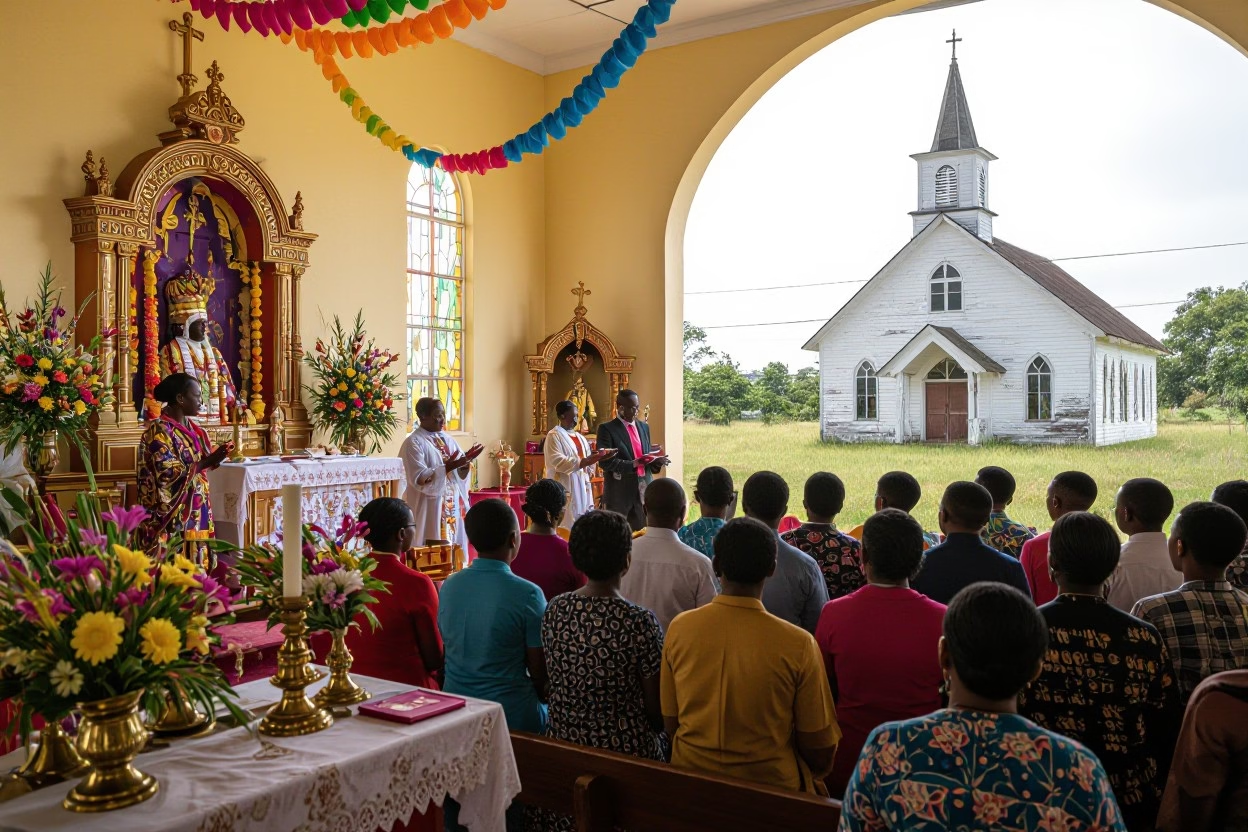
The Global Surge: Unpacking Growth in the Global South
Demographic Dynamics Fueling Growth
The explosive growth of Christianity in Africa, Asia, and Latin America is deeply tied to demographic realities. You can observe in regions like Sub-Saharan Africa that birth rates remain among the highest globally, with many countries maintaining fertility rates above four children per woman. This youthful population naturally increases the number of potential new Christians through family growth alone. In countries such as Nigeria and the Democratic Republic of Congo, populations are projected to double or even triple by 2050, providing a massive base for church expansion.
Beyond births, conversion plays a significant role fueled by urban migration and social change. As cities grow rapidly, young people encounter new ideas and forms of worship that often feel more immediate and relevant than traditional institutions. This demographic momentum isn’t just a statistic; it actively shapes the vibrancy and resilience of churches, keeping them forward-looking and growing even as Western congregations shrink.
The Role of Charismatic and Indigenous Leadership
Charismatic and indigenous leadership styles have reinvented Christianity’s appeal across the Global South. Many churches embrace Pentecostal and charismatic movements, which emphasize experiential worship, healing, and prophecy. These elements resonate with local spiritual sensibilities, making Christianity feel authentic and deeply personal. Leaders who arise from within the community—not foreign missionaries—bridge cultural gaps and adapt theology to fit social contexts. This contrasts sharply with Western churches, where congregants often perceive leaders as distant or institutionally out of touch.
In places like Brazil, Kenya, and the Philippines, church leaders have become prominent public figures who combine pastoral care with entrepreneurial and social activism. Their influence extends beyond worship into healthcare, education, and poverty alleviation programs. This holistic approach anchors churches as indispensable parts of community life and enhances institutional trust—something largely eroded in Western contexts.
These leaders are often bilingual or multilingual, adept at mixing indigenous languages with global Christian liturgies, which further strengthens cultural relevance. Their ability to contextualize worship while staying connected to the global church network creates a dynamic balance between local identity and universal faith. The experience of navigating persecution or legal limitations also refines their leadership strategies, making them remarkably adaptable and resilient—a vital factor in sustained growth amid hardship[9][11].
Community Resilience: Churches as Social Support Systems
Providing Services Beyond Spiritual Needs
In many parts of the Global South, churches serve as much more than places of worship—they act as critical providers of vital social services. You’ll find that in rapidly urbanizing regions of Africa, Asia, and Latin America, churches often manage schools, health clinics, and food distribution programs, meeting immediate needs that governments and other institutions frequently fail to address. For example, in Nigeria and Kenya, Christian organizations deliver basic healthcare to underserved rural areas, significantly improving local health outcomes.
These social services strengthen the church’s position within communities and deepen engagement among congregants. When churches step in to fill gaps in education and welfare systems, they become trusted social hubs, fostering long-term loyalty. This direct involvement in everyday life contrasts sharply with many Western contexts, where churches increasingly struggle to maintain relevance amid widespread social safety nets and declining institutional trust.
Adapting to Urbanization and Changing Demographics
The rise of megachurches in cities across the Global South reflects how Christianity has adapted to the pressures and opportunities of rapid urban growth. In places like Lagos and São Paulo, you’ll see congregations that attract tens of thousands, offering contemporary music, dynamic preaching, and community events tailored for young professionals and families navigating busy urban lifestyles. This urban church model contrasts with the often aging and shrinking rural parishes typical in the West.
Churches have also responded to shifting demographics by incorporating local languages, cultural expressions, and leadership styles that resonate with diverse populations. This contextualization allows congregations to remain both culturally relevant and spiritually engaging. For instance, Pentecostal and charismatic movements often blend indigenous music and communal worship practices, creating a powerful sense of belonging and identity that appeals particularly to younger urban dwellers.
Expanding beyond traditional Sunday services, many urban churches in the Global South offer vocational training, counseling, and networking opportunities, directly addressing the complex needs of migrants and the urban poor. These adaptations not only sustain growth but also foster resilience, enabling communities to thrive despite economic hardships and social change.
The Emerging Megachurch: A New Face of Global Christianity
Characteristics of Megachurches in Urban Centers
Megachurches in the Global South typically draw thousands of worshippers weekly, often congregating in purpose-built facilities equipped with state-of-the-art audiovisual technology and multifunctional spaces. These urban centers emphasize vibrant, high-energy worship services that blend local cultural elements with contemporary music styles, creating an immersive experience that feels both familiar and inspiring. Their services often include multiple language options or incorporate regional dialects, reflecting a deep commitment to accessibility and community engagement. Infrastructure-wise, these churches frequently function as social hubs, offering classrooms, childcare, health clinics, and business incubators alongside traditional religious activities.
Unlike many Western churches facing declining attendance and financial strain, Global South megachurches benefit from rapid urbanization and rising middle-class populations who seek spiritual communities aligned with their social realities. Leadership structures in these churches are generally dynamic and adaptive, with pastors directly engaging congregants and leveraging media platforms ranging from radio and television broadcasts to social media livestreams. This blend of localized context and modern communication makes the megachurch model particularly effective in growing and sustaining large followings amidst the continent’s fast-paced urban environments.
Their Appeal to Young Professionals and the Middle Class
Young professionals and the urban middle class in many Global South cities gravitate toward megachurches because these institutions articulate faith in ways that resonate with their aspirations and daily experiences. Services are intentionally scheduled to accommodate busy work weeks, often including evening events, networking meetups, and seminars that connect spiritual messages with personal development and entrepreneurship. You’ll find that sermons frequently address practical topics such as financial stewardship, career challenges, and mental health, effectively bridging the often-perceived gap between faith and modern professional life.
Megachurches also appeal through their community-building efforts, offering opportunities to connect with peers beyond Sunday worship. Small groups, social clubs, and volunteer networks foster a sense of belonging while addressing social needs relevant to this demographic. Additionally, the emphasis on contemporary worship music, multimedia presentations, and relatable preaching styles helps maintain engagement and challenge traditional notions of church being static or out of touch. This connection is particularly strong among those who might otherwise feel alienated by rigid or hierarchical religious institutions.
The presence of skilled, charismatic leaders who embody both spiritual authority and modern professional success further amplifies the megachurches’ appeal to these groups. When pastors and church staff integrate entrepreneurial skills with theological teaching, they model a holistic approach to faith that includes economic empowerment and social mobility. Consequently, you see megachurches emerging not only as spiritual centers but also as influential players in urban middle-class culture, shaping social values and providing platforms for leadership development across the Global South’s rapidly growing cities.

The Shifted Landscape: Reassessing Christianity’s Global Center
Predictions for the Future of Christianity by 2050
By 2050, the demographics of global Christianity will look markedly different from today. The Global South—encompassing Africa, Asia, and Latin America—is projected to house nearly 70% of the world’s Christians, a monumental shift from the mid-20th century when Europe and North America dominated Christian populations. This trend is driven largely by high birth rates and sustained conversions in these regions, in contrast to aging populations and secularization in the West. You can expect vibrant Christian communities in countries like Nigeria, Brazil, and the Philippines to continue expanding, influencing not only religious practice but also local politics, social services, and even global Christian networks.
Meanwhile, Christianity in Europe and North America will likely consolidate into smaller, more diverse expressions rather than maintain large institutional churches. The rise of “nones” and individualized spiritualities suggests that organized Christianity may become increasingly fragmented, with traditional denominations losing their social authority. Yet, some faith communities in the West will adapt by embracing more inclusive theologies and new forms of worship that resonate with changing cultural values. Still, the overall center of gravity—socially, culturally, and numerically—will firmly rest in the Global South, shaping the future ethos and outreach strategies of Christianity worldwide.
The Potential for Global Dialogue Between Regions
The enlarged role of the Global South in Christian demographics opens up significant opportunities for global dialogue that challenge old hierarchies and hegemonies within Christianity. African and Asian church leaders, often characterized by their grassroots, charismatic, and Pentecostal approaches, bring fresh theological perspectives grounded in resilience amid persecution and practical community support. These insights could enrich Western churches struggling with decline and relevance. If Western institutions listen carefully, this exchange might foster mutual learning where the West benefits from the vitality and adaptability displayed by Global South communities, while the South gains from Western resources and theological scholarship.
This dialogue is not without tensions. Historical power imbalances and differing views on issues such as gender roles, sexuality, and ecclesiastical authority complicate potential alliances. However, you should view these interactions as a necessary evolution within Christianity’s global ecosystem. Increasingly, conferences, mission partnerships, and digital platforms are facilitating conversations across continents. Such exchanges could bridge divides, helping churches worldwide address shared challenges like secularization, social justice, and interfaith relations by pooling diverse approaches and resources.
Moreover, this emergent global conversation extends beyond theology into the practical realms of community development and social activism. You might see Global South churches offering models for engaging marginalized populations through health clinics, education, and poverty alleviation efforts—areas where Western churches have waned. Simultaneously, Western churches could contribute by advocating for religious freedom, human rights, and environmental care on international stages where Global South voices increasingly have moral authority. Together, this partnership could generate a more holistic Christian witness in an interconnected world.
Conclusion
With this in mind, you can see that the contrasting trends in Christianity’s presence across regions are shaped by deeply rooted social, cultural, and demographic factors. In the West, your experience may reflect a landscape where Christianity is less dominant, influenced by secularization, diminished institutional trust, and shifting cultural values that emphasize individualism and pluralism. This creates an environment where traditional church participation declines, and alternative forms of spirituality or non-affiliation become more common. Understanding these dynamics helps explain why many Western societies are experiencing shrinking congregations and doubts about organized religion’s relevance.
At the same time, you should recognize that the Global South tells a very different story. Here, Christianity thrives through its dynamic, locally-led expressions that engage younger populations and adapt to cultural contexts. Your awareness of how churches function as centers of community support, vibrancy, and resilience under pressure reveals why this region is becoming the new heartland of global Christianity. By appreciating these divergent developments, you gain a clearer picture of how Christianity’s global future will be shaped by the interactions between demographic change, social needs, and cultural adaptation in very different parts of the world.
FAQ
Q: What are the main reasons behind the decline of church attendance in Western countries?
A: The decline in Western church attendance is largely due to generational changes, where younger populations are less religious than previous ones, combined with increasing secularization. Additionally, loss of institutional trust from scandals and perceived hypocrisy, cultural shifts toward individualism and pluralism, and the diminished cultural relevance of traditional churches contribute significantly to this trend.
Q: How does demographic change influence the growth of Christianity in the Global South?
A: The Global South benefits from a young, rapidly growing population with high birth rates, which naturally expands Christian communities through family growth. This demographic momentum, coupled with conversions, fosters continued growth and vitality within churches in regions like Africa, Asia, and Latin America.
Q: Why have churches in the Global South maintained higher levels of institutional trust compared to the West?
A: Churches in the Global South often have strong local and indigenous leadership that is closely connected to their communities. This grassroots, charismatic approach, along with the delivery of crucial social services like education and healthcare, helps build and sustain trust, in contrast to the Western churches which have experienced scandals and perceived detachment from modern social issues.
Q: In what ways have cultural and philosophical shifts contributed to Christianity’s decline in Western societies?
A: Western societies have seen an increase in individualism, pluralistic worldviews, and secular philosophies that encourage spiritual exploration outside traditional religious institutions. Advances in science and technology also challenge the church’s role as a primary source of meaning, reducing its influence and appeal among many people.
Q: How do churches in the Global South adapt to local contexts, and why is this important for their growth?
A: Churches in the Global South adapt by incorporating local languages, cultures, and worship styles, often led by indigenous leaders. This contextualization makes Christianity more accessible and relevant to local communities, fostering a sense of ownership and participation that encourages growth and vibrancy in the faith.
Q: What role does persecution play in the resilience and growth of Christianity in some Global South countries?
A: In countries where Christians face persecution or legal restrictions, such as in parts of Asia, the faith often grows through underground and house churches. This persecution can strengthen community bonds and commitment, fueling a resilient growth despite external pressures.
Q: How is the global center of Christianity shifting, and what are the implications for the future of the religion?
A: The center of Christianity is moving away from Europe and North America toward Africa, Asia, and Latin America. By 2050, the majority of the world’s Christians are expected to live in the Global South. This shift means that Christian practices, leadership, and theological emphases will increasingly reflect the diverse cultures and experiences of these regions, shaping the future global identity of Christianity.

